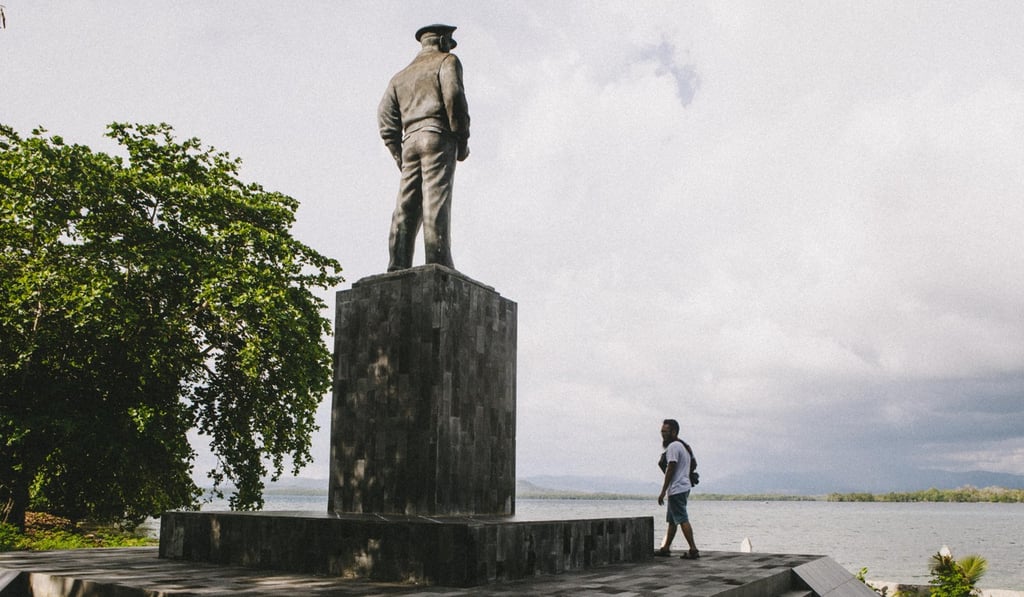One-man World War II museum on Morotai island in Indonesia tries to preserve history before it is sold off
- US troops seized Morotai island in Indonesia from the Japanese in 1944 and later used it as a fighter base
- Local resident Muhlis Eso runs a museum to show the various relics found around the island

Stepping inside the stuffy interior of the small, bare concrete building that houses a World War Heritage Museum on Morotai, a rugged island in Indonesia’s North Maluku, the first things you see are stacks of hundreds of bullets from various calibre weapons. Rusty machine guns, swords, grenades, helmets and army drinking bottles sit on makeshift displays covered by tattered red carpet.
Painted murals adorn the walls – one depicts soldiers raising a US flag on a pole, another shows an plane with a Japanese flag in the background. On the other side of the building, a mural shows a uniformed soldier in sunglasses walking with his men. Painted in 2017, it is an artist’s attempt to replicate a photograph of General Douglas MacArthur, commander of the southwest Pacific Area.
On September 15, 1944, MacArthur and his troops landed at Morotai, to seize the island from Japanese control. Morotai, an island, located in the Pacific Ocean was considered a strategic area to retake the Philippines from Japan during World War II. The Allies used the island as a fighter base, before heading to the Philippines and Eastern Borneo.
“As you can see, this is the condition of my museum. It is quite basic, because I do everything by myself,” says Muhlis Eso, 39 years old, the owner of a World War heritage museum which he has managed independently since 2014.

Eso is stocky, dressed in a military shirt, his hair trimmed short. “When I was 10 years old, my grandfather, Tadu Eso, who was an Indonesian freedom fighter, told me about the presence of Japanese troops in Indonesian territory, including the Morotai Islands region,” he says.